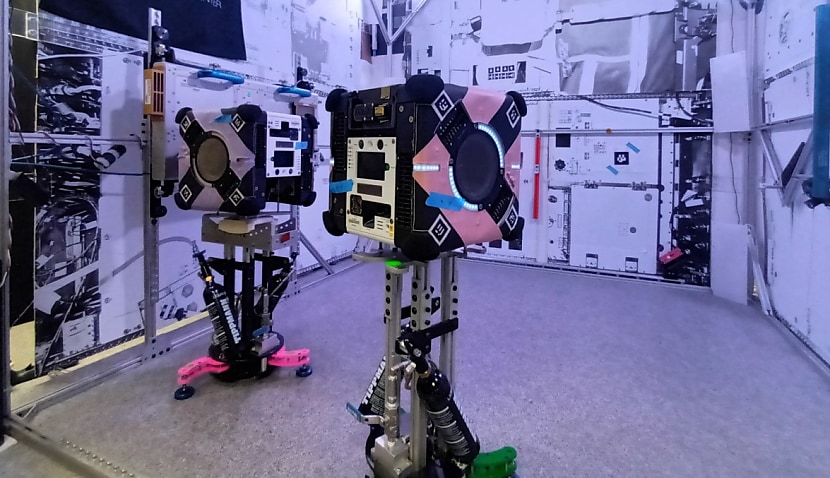
The CSIRO payload will allow the free-flying Astrobee robots to keep track of inventory around the station and assist astronauts and mission controllers in planning activities.
If successful, it’s hoped the tech could one day help robots perform caretaker operations autonomously and even scan the outside of space stations.
CSIRO research group leader Dr Marc Elmouttie said the device can create 3D maps in greater detail than before.
“The device combines two CSIRO technologies – Stereo-Depth Fusion and Wildcat Simultaneous Localisation and Mapping – to produce high-quality data about the surrounding environment and its own movements through space,” he said.
“Combining information from a range of different sensors allows us to know not only what the robot’s surroundings look like, but also how that robot is moving through three-dimensional space.”
The device will be installed into Astrobee, a NASA “robot platform” that roams around the station to assist with tasks.
There are currently three units onboard the ISS, named Honey, Bumble and Queen, which are shaped like cubes and recharge on a special docking station.
They use electric fans as propulsion to help them navigate the microgravity of the space station.
The upgrade was developed in partnership with Boeing with the support of the ISS National Laboratory and NASA Ames Research Center.
The team is also looking at potential applications for exterior hull scanning for Gateway – an upcoming small space station – and lunar surface exploration planned as part of NASA’s Artemis program.
“This is really a jumping-off point for us. Once we’ve confirmed this type of payload can do the job, then the sky’s the limit,” Elmouttie added.
“Boeing is committed to providing improved capabilities and enhancing safety for trips to the moon and beyond,” said Scott Copeland, director for ISS research integration at Boeing.
“That requires the intersection of crew and robotic tasks, and the multi-resolution scanning technology being demonstrated aboard our testbed in low-Earth orbit will be a powerful tool to help us meet those goals.”
The first experimental run is slated for the Japanese Kibō module after it arrived via SpaceX’s 30th Commercial Resupply Services-30 mission.
The launch took place at Space Launch Complex 40 at Cape Canaveral Space Force Station in Florida at 7:55am on Friday, 22 March (AEDT).

Adam Thorn
Adam is a journalist who has worked for more than 40 prestigious media brands in the UK and Australia. Since 2005, his varied career has included stints as a reporter, copy editor, feature writer and editor for publications as diverse as Fleet Street newspaper The Sunday Times, fashion bible Jones, media and marketing website Mumbrella as well as lifestyle magazines such as GQ, Woman’s Weekly, Men’s Health and Loaded. He joined Momentum Media in early 2020 and currently writes for Australian Aviation and World of Aviation.
Receive the latest developments and updates on Australia’s space industry direct to your inbox. Subscribe today to Space Connect here.









